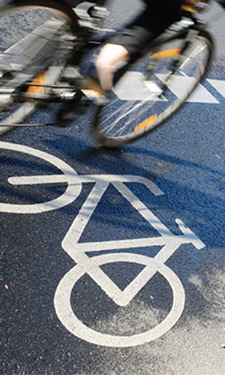 One of the most efficient ways to build physical activity into a daily routine is to make the process of getting from Point A to Point B, an active one rather than passive. That means creating access to routes that are safe and convenient for walking, biking, jogging, and more.
One of the most efficient ways to build physical activity into a daily routine is to make the process of getting from Point A to Point B, an active one rather than passive. That means creating access to routes that are safe and convenient for walking, biking, jogging, and more.
The Facts
- Active transportation and parks interlink with one another in most communities. That’s because maintaining or expanding active transportation systems often relies on recreation and park agencies for initial infrastructure development, maintenance, promotional programs and marketing. As such, recreation and park programs are helping to create a culture shift toward increased active transportation.
- Because increased use of active transportation decreases pollution, the American Lung Association found that increased active transportation can significantly reduce premature deaths, heart attacks, asthma attacks, chronic and acute bronchitis cases, respiratory-related emergency room visits, and lost work days.
- A recent study showed that people who walk a few times per week filed 14 percent fewer health care claims, spent 30 percent fewer days at a hospital facility, and had 40 percent fewer claims over the amount of $5,000. If people reduced automobile use by 1 percent and instead walked to do nearby appointments or errands, they could lower obesity, saving tens of millions of dollars in medical expenses.
- People who live near trails are 50 percent more likely to get enough physical activity to help them stay healthy. People who live in walkable neighborhoods are twice as likely to get enough physical activity as people who don’t.
- A 2005 study found that in Lincoln, Nebraska every $1 spent on trails saved almost $3 in direct medical costs over time.
- Residents living in areas with more active transportation had lower obesity rates than areas without a local culture or infrastructure that supports active transportation.
- Installing bike lanes increases the use of bicycling as a form of active transportation. When Portland, Oregon expanded its active transportation infrastructure to encourage cyclists, the next five years saw four times as many cyclists and a 69 percent decrease in accidents.7 In New Orleans, a new bike lane increased cyclists by 225 percent.
Download Factsheet